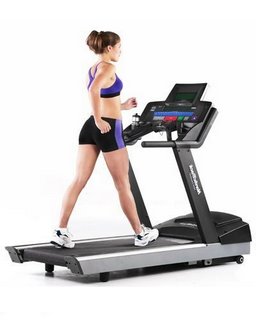ALL ABOUT YOUR CARDIO MACHINES - Part One

 Fitness expert, SUMAYA DALMIA concludes by discussing the pros and cons of the latest cardio machines found in your health club
Fitness expert, SUMAYA DALMIA concludes by discussing the pros and cons of the latest cardio machines found in your health clubTREADMILL:
Treadmill running is better than rowing, elliptical training and stationary biking for burning calories and maintaining cardiovascular fitness. While running there is a period when both feet leave the ground; and it takes a lot of energy and force for the body to go air borne. On other machines you maintain contact with the equipment at all times.
Watch points:
Most treadmills offer pre set programs like interval training, fat burn, cardiovascular fitness, uphill programmes etc. It is important to understand each before you decide the right program for you. Your best bet would be the manual programme, where you can adjust the speed and elevation at any point during your workout.
Don’t hold the handle bars. Maintain correct posture and a neutral spine. Try to contract your abs and buttocks for the added effect.
Don’t run when you can walk. Brisk walking on the treadmill with a correct form is a great workout. Use your arms to aid your strides and then see the difference!
Warm-up, start slow, gradually build speed and then begin walking on the treadmill.
On the screen:
The display panel will show you the speed- in km/hr or miles/hr, the elevation, distance covered, calories burnt and your heart rate on holding the sensors. Use the calories and heart rate calculations as estimates and not as actuals, as your weight, height, muscle mass and body type need to be considered for accurate results. For accurate results you need to strap on a polar heart rate monitor which is connected to the panel. Check your exercise heart rate using the calculations provided in the previous article.
Downside:
Treadmill running may cause knee, ankle, back and hip pain in some women. Not advisable for over weight and new exercisers as it may not promote joint health.
ELLIPTICAL TRAINER:
When it comes to working the entire body, this machine wins hands down. It works the entire body due to the pulling and pushing of the handle bars.
Performing high tension exercises like stair climbing or jarring exercises like treadmill running can aggravate an already sore knee.
Practice interval training by increasing the resistance or alternating high and low striding speeds. If you have a heavy lower body or a tendency to bulk up, then train between 80-110 spm at low resistance levels. If your goal is to maintain fitness levels or to gain strength and size, stick to a high resistance with a spm of 60-70.
Besides forward strides you also have the option to reverse the direction where you will be targeting the front muscles of your legs or concentrate on pulling and pushing with your arms to guide the SPM with your upper body and take the load of your legs.
On the screen:
Besides the regular indications you will also see a blinker indicating SPM which reads as strides per minutes. 65-85 spm is an average stride that one must maintain.


0 Comments:
Post a Comment
Subscribe to Post Comments [Atom]
<< Home